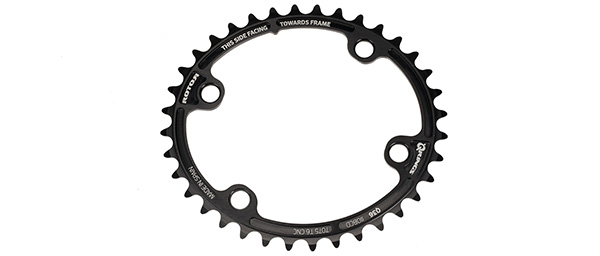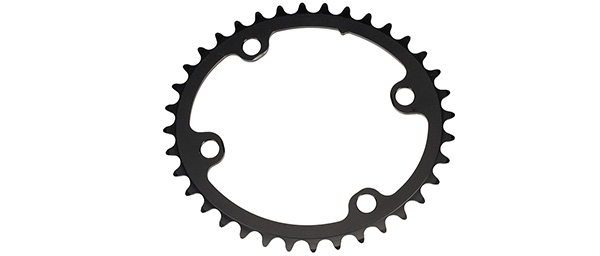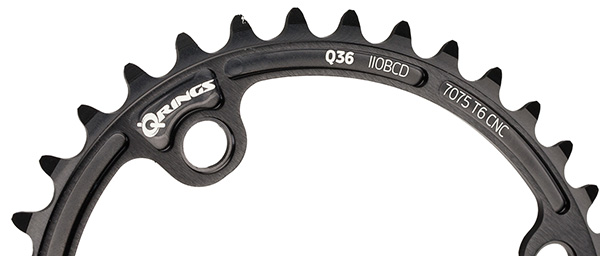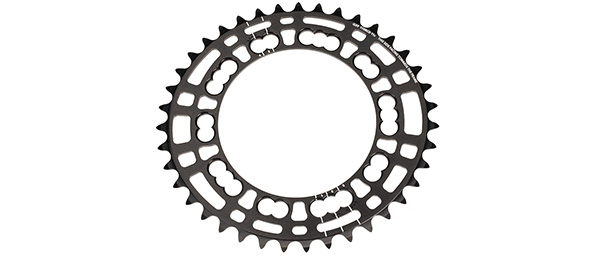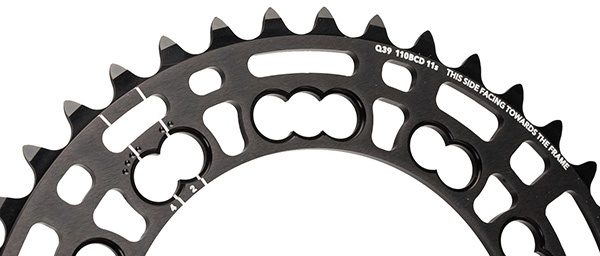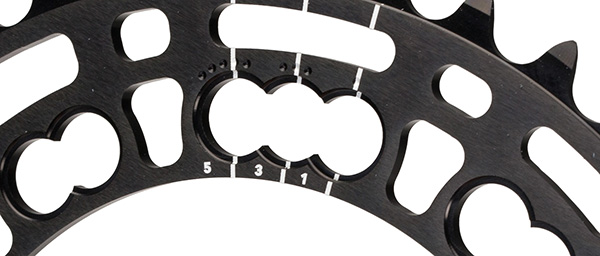Description

Rotor's Q-Ring oval inner chainrings allow the cyclist to position an oval shaped ring to an optimal position relative to their pedal stroke for best efficiency, reducing or eliminating the so-called dead spot in a full pedal revolution. This is a proven technology, and the Q-Ring is quite effective for many cyclists, though not all. Rotor builds multiple positions to offset the ovality of the Q-Ring, and an experienced bike fitter can work with a cyclist to test and discover the best Optimum Chainring Position (OCP) for their stroke and physiology. A powermeter, while not truly required, is the best tool to determine the optimal OCP.
Rotor has manufactured their Q-Ring Inner Chainrings for several crank arm designs. You will several options listed here. What we call Shimano 110mm refers to the 11-speed Shimano Asymmetric 110mm BCD, 4-arm design. The second 110mm option represents the 5-arm 110mm BCD standard, commonly used by many road cranksets over the years. The same can be said for the 130mm version, which is the 5-arm 130mm BCD that was used by SRAM, Shimano, and others (except Campagnolo) in the past and/or present.
Precision CNC machined from T6-7075 aeronautic-grade aluminum alloy, the rings are inherently stiff, especially in this design. Rotor uses their own shift gate and ramp system and are engineered so that the inner and outer rings align properly for best shifting performance and results. We have found that cyclists who already have a refined bike fit can self-determine their optimal OCP on their own if they use a powermeter and computer to track the power output, cadence, speed, and heart rate. First use your standard round chainrings to define your current baseline information. It is best to use a trainer for your first series of tests so you can easily duplicate your efforts with fewer variables as you change OCP positions (both inner and outer must match OCP), but then you should transition to outdoor use on a ride or course you can truly match ride for ride, shift for shift. Usually the trainer will eliminate one of the positions, so you will likely only need to work with your outdoor baseline, then two OCP options.
If you current powermeter or self-diagnosis indicates to you that you are losing efficiency in the pedal stroke, or if you simply want to experiment with performance gain options, Rotor's Q-Rings are a great way to explore and maximize efficient power in your pedal stroke. We have sold Q-Rings for over a decade and many cyclists and triathletes have embraced the system to their satisfaction. We strongly encourage minimizing "feel" and embracing data, but don't discount what your body tells you. Always give yourself a few weeks of controlled rides to get used to the feeling and changes in muscle interaction, as well as the shifting performance. If you are patient and smart about how you adopt the Q-Rings, you are more likely to get the most significant benefits.
Return to TopFeatures
- Oval-style aero road inner chainrings for optimizing pedal stroke efficiency
- Proven design, with 10% ovality and multiple Optimum Chainring Position options
- Inner rings must be matched with proper Q-Ring outer ring (ex. 50T w/ 34T)
- CNC machined from T6-7075 aluminum for incredible precision
- Rings use Rotor's shift gate, pin and ramp design for oval rings
- Rings are inherently stiff, aero, and durable to daily use
- OCP options and technical information marked in finish
- Shimano Asymmetric 110mm 4-arm options: 34T, 36T, 38T, 39T
- Standard 5-arm 110mm BCD options: 34T, 36T, 39T
- Standard 5-arm 130mm BCD option: 39T
- Color: Anodized Black
